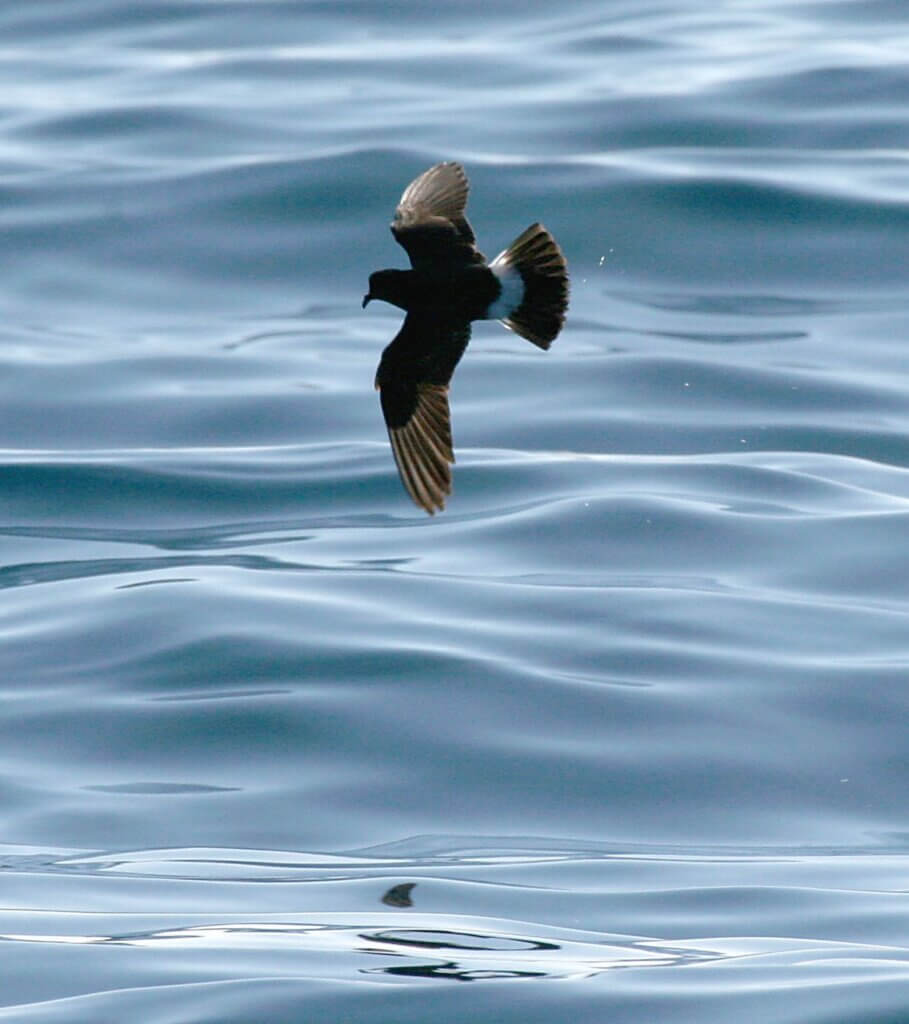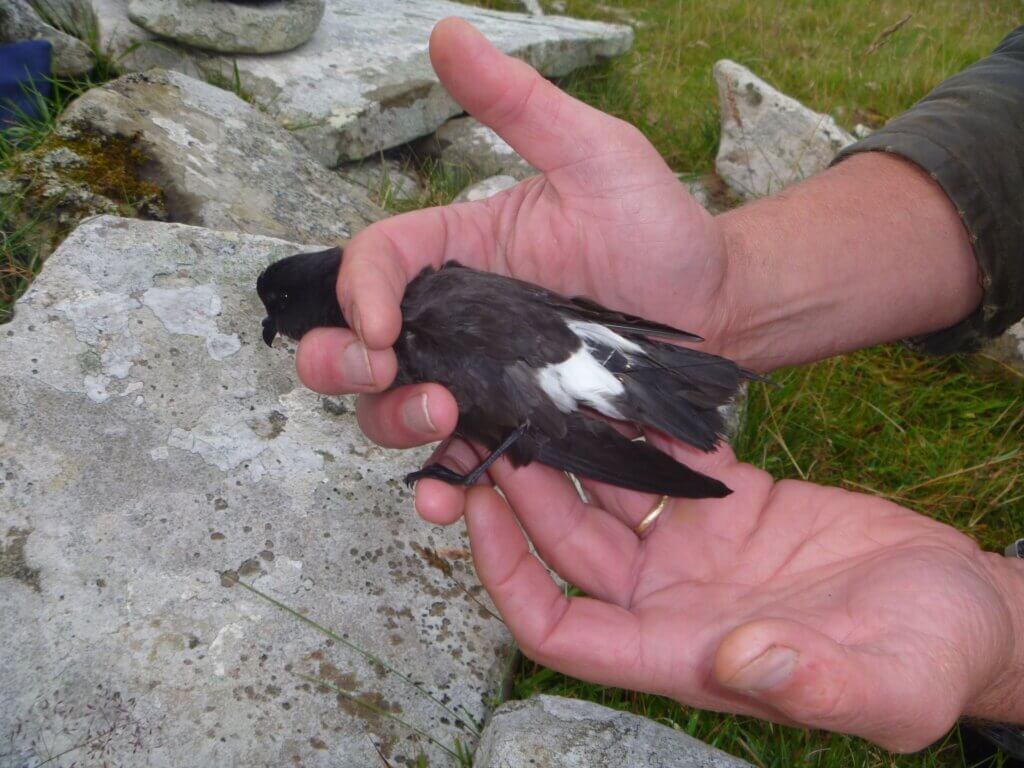
New research has pioneered the use of GPS tags on the UK’s tiniest seabird, the Storm Petrel. For the first time several years of data have been collected on the little birds’ movements at sea.
Researchers discovered they regularly travelled up to 300 kilometres to feed in the stormy waters off Shetland.
The Storm Petrel is the UK’s smallest seabird. An adult weighs just 25 – 30 grams. That’s the same as three £1 coins. The tags used weigh less than a gram.
Because Storm Petrels are active at night the GPS data gives a unique insight into their behaviour and offers valuable lessons about how they might be protected.
The UK, and Shetland in particular, is key to the species. The colony studied on Mousa in Shetland represents 2% of the entire global population of the birds.
Researchers expected birds to use waters at the edge of the continental shelf to the west of Shetland, where high concentrations of storm petrels have been reported in previous decades from boat surveys. However, the study found that the Mousa birds concentrated on two main unexpected sites. One was 110 kilometres to the south of the colony and probably represented the areas birds were using for feeding.
The other high concentration of birds occurred in the waters surrounding the colony and reflected the commuting flights of the birds to and from their nests at night.
It’s thought that the nocturnal habits of the birds have meant that past surveys have missed their reliance on inshore waters.
The new finding that birds occur in such high numbers so close to shore at night means extra thought should be given to whether human activity might have an impact on the birds. Much of the areas used by the Shetland birds is already specially protected for other forms of marine life. But this research provides fresh insight that the area is also key for an important bird species.
Fieldwork was carried out on the island of Mousa between mid July and late August each year between 2014 and 2017. The colony is home to almost 11,000 pairs representing around 2.5% of the minimum estimate of the global population of the species. The island is designated as a European Special Protection Area (SPA), with storm petrels named as a protected feature.

Nest boxes were built allowing birds to be easily captured, tagged and released. The tiny tag is attached to the birds’ tail feathers and doesn’t affect its ability to fly and forage.
A total of 42 individuals were tracked over four breeding seasons. Foraging trips lasted between one and three days and generally ranged up to 300 kilometres from the colony.
One bird travelled almost 400 kilometres to the Norwegian coast. Researchers think it was blown off course in a storm. Amazingly the bird returned to the nest in just 24 hours.
The waters around Shetland are home to key industries for Scotland and the wider UK, in particular oil and gas extraction, renewables and fishing.
While researchers did not find evidence of direct negative impacts on the birds from these industries, the new insights should now inform the development of industry and marine protection with an improved evidence base.
Paper author Mark Bolton said “This was ambitious research and provides the most comprehensive insight into how these tiny birds use our vast marine environment to feed and raise their young. The new insights about their behaviour demonstrate the value of fundamental science as well as providing an amazing window into the travels of our smallest seabird.”
Head of Marine Policy at RSPB Scotland Alex Kinninmonth said
“Embracing this game-changing technology has allowed us to build a more complete picture of the lives of these elusive birds. Without it any attempt to identify locations for conservation action or to assess the potential threats to the storm petrels from this important colony would have overlooked these key places.
Scotland’s seabirds are already in trouble and face an uncertain future, so expanding our knowledge of where they go at sea and why is vital to give them a fighting chance against ever increasing human-made pressures. New findings such as these must be heeded by governments as they regulate activity at sea if we are to see a reversal of downward trends.”
The research appears in the journal Bird Conservation International https://www.cambridge.org/core/journals/bird-conservation-international
PETREL FACTS
- storm petrels feed on plankton and small fish
- they nest in burrows, among rocks or holes in stone walls
- on Mousa they are known to nest in the walls of an iron age broch
- as they are nocturnal the only way to census them is to play a call at a hole and see if a nesting bird responds
- they have a distinctive musty aroma that can help researchers locate breeding colonies
- they spend our winter in the ocean off South Africa and Namibia
- the Shetland dialect name for storm petrel is ‘alamootie’
Ends
[registration_form]
I am always fascinated by the feeding movements our seabirds make but Stormies are exceptional because they are so tiny. They look so fragile in the hand or even more so at sea in anything other than a flat calm. The more we learn the more exceptional we find the ordinary lives of our wildlife are. I can well remember at a ringing demonstration a lady saying what we do is not necessary because we have surely found out all there is to know, yes we know a great deal about a lot of our birds but new technology and continuing studies keep demonstrating actually how little we know and how much there probably still is that we simply don’t know.
Aren’t birds marvellous.